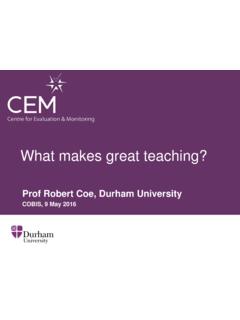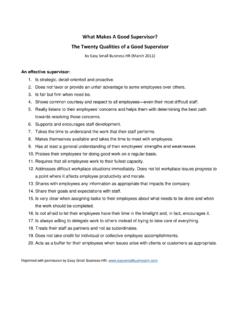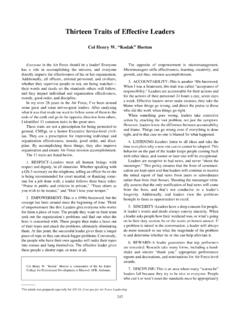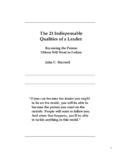Transcription of What Makes a Good Lesson?
1 what Makes a good lesson ? All teachers share a common goal of teaching lessons each day that will excite students and impart information to them which they will then retain and extend to other subject areas. But how do we do that consistently? The following steps will help you construct lessons that engage your student s interest, give him/her the desired information, and then check to make sure he/she fully understands the concepts being taught. The order of the lesson and the creativity and variety of methods used in the lesson are key to its success.
2 lesson Plan Steps 1. Introduction: This is the most important step because it hooks the student s attention and sets the stage for the rest of the lesson . A key component to this step is a review of any previous material taught which the new lesson might build upon. This is a time to be creative and use a variety of approaches to catch the student s interest and lay the foundation for the lesson . Photographs, word games, flashcards, provocative questions, video clips, puzzles, demonstrations, eye-catching props, KWL organizers, etc.
3 Can all be used to focus your student s attention and interest. These hooks should also address a student s prior knowledge or formal lessons of the material to be presented. A second key part of the introduction is to clearly state the objective of the lesson , its purpose, and your expectations. All students need to know why they should put their full effort into learning something; they need to know what exactly they will be learning and what they will be held accountable for. Even (or especially) very young students need to know what to expect from a lesson , the activities that will be involved, what they will be able to do as a result of the lesson , and why it is important.
4 2. Instructional Input and Modeling: Next, you provide the information and concepts of the lesson using a variety of methods such as lectures, demonstrations, read alouds, diagrams, etc. Here, you tell the student the key material he/she needs to know. The second part of this step is modeling in which you demonstrate what you expect him/her to do. You model how to solve the equation, how to follow the steps in the science experiment, how to diagram a sentence, or how to think out loud to work through a problem.
5 As every parent knows, modeling is a very effective way to show children exactly what is expected from them and Makes it easier for them to successfully apply the information that has been taught. 3. Checking For Understanding: It is very important to make sure that your student understands the material before you proceed with the next steps of the lesson . Unfortunately, simply asking Any questions? is not enough to determine whether or not your student is making sense of the information presented. Watch your student s face, ask him/her to explain the material to you, or ask him/her questions related to the material.
6 If he/she does not have a good grasp of the material, return to Step 2 and try different approaches to the input and modeling until your student gains understanding. 4. Guided Practice: This is an opportunity, immediately after your instruction, for your student to apply or practice what he/she has just learned and receive immediate feedback from you. Your job is to observe his/her performance, determine the level of mastery, and provide remediation and reteaching as necessary. If more than one student is learning the material, this is a good time for them to work together as the teacher observes their interaction and performance.
7 5. Independent Practice: Once your student has mastered the content or skill and demonstrated understanding, it is time for him/her to further apply the new knowledge on his own. This can be accomplished through independent completion of learning activities such as worksheets, quizzes, experiments, presentations, projects, written papers, assessments, etc. It is essential that your student is able to successfully complete this step on his/her own by applying what he/she has learned to other curriculum activities.
8 6. Closure: In this final and frequently neglected step, you analyze the student s understanding of the lesson and how it relates to the curriculum to help your student bring together and make sense of what he/she has learned and how it applies to the learning objectives. In this step review and clarify with your student, the key points of the lesson , tying them together into a coherent whole and ensuring your student s ability to retain and use the new information. This is also a good time to preview what will come next and how it will relate to what has just been learned.
9 Closure may include a brief question and answer session or a short verbal summary. Extended closure activities might include a collage, a summary paragraph, a graphic organizer, a mobile, a poster, etc. This is another place where you can use your imagination and creativity to help your student feel successful and positive about the lesson learned.









